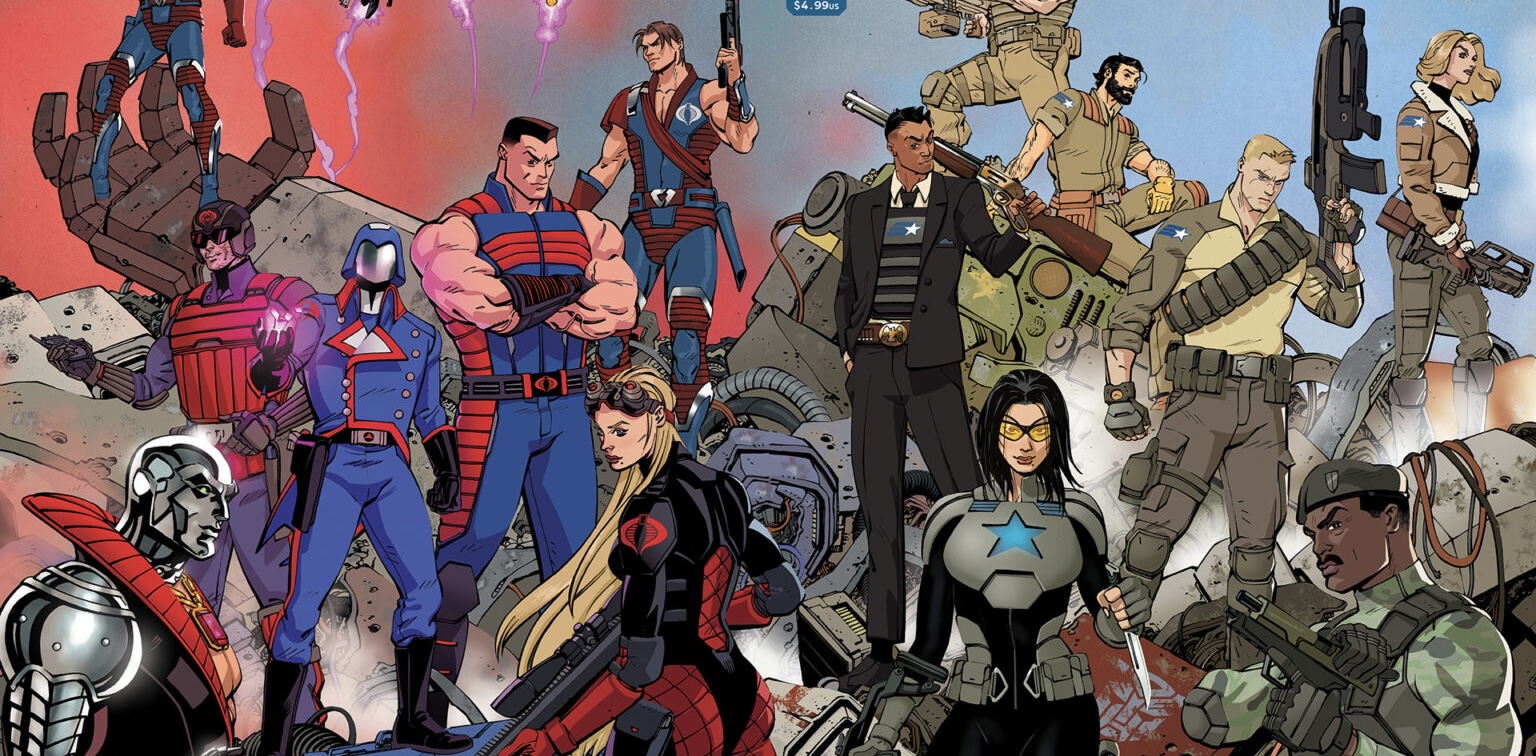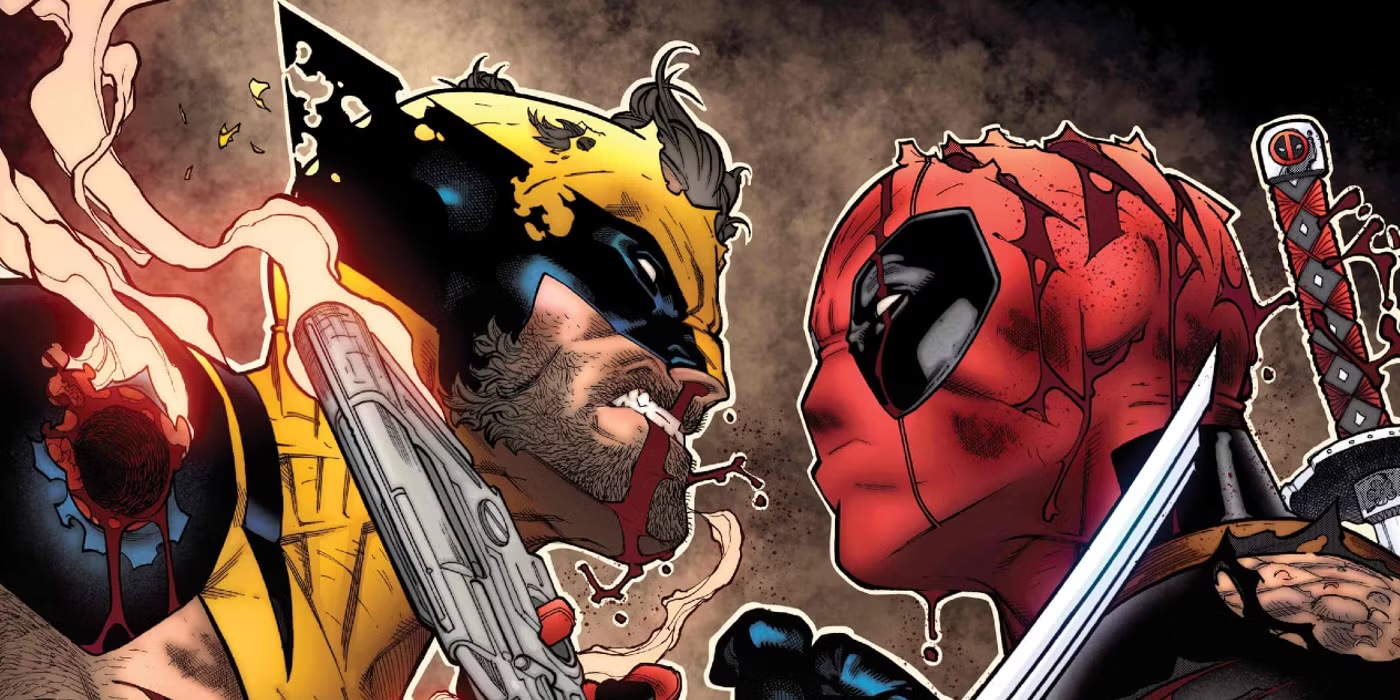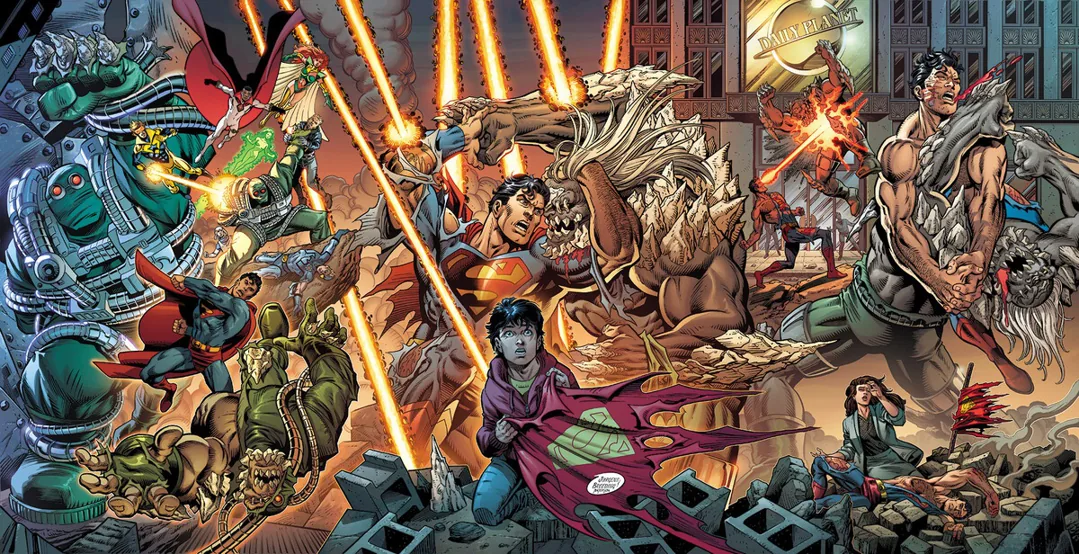Absolute Flash #2 continues the electrifying momentum of the debut issue, which took the comic world by storm. With Jeff Lemire at the helm and Nick Robles bringing surreal beauty to the panels, this issue deepens the mystery, expands the emotional weight, and further reimagines The Flash in DC’s critically acclaimed Absolute Universe.

Where issue #1 introduced us to a vulnerable and volatile Wally West, issue #2 hurls us straight into chaos—temporal, emotional, and physical. Wally, now a living conduit of super-speed and unstable time travel, is being hunted by the reimagined Rogues Gallery, dispatched by his own father, Rudy West, and the ominous Project Olympus. The goal? Bring Wally back to Fort Fox—dead or alive.
This time around, Lemire leans harder into psychological and body horror, echoing the unsettling tone of works like Slaughterhouse-Five and Akira. When Wally bursts into the past and sees Barry Allen—his mentor and friend, long thought dead—it’s not a triumphant reunion. It’s a haunting, spectral moment, tinged with regret and instability. Lemire’s script smartly uses Wally’s fragmented mind as a narrative engine, with time skips functioning as both literal plot devices and metaphors for trauma-induced dissociation.
The Rogues are a standout in this issue—not just colorful villains but threatening forces that feel unpredictable and deeply altered. Golden Glider is colder and more vicious. Captain Cold remains the tactical heart of the group. But it’s The Trickster, reinvented as a deeply disturbing creep with Toyman-like menace, who steals the show with his yo-yo sphere trap and sinister intent. His offhand comment about “picking Wally apart” like they did to Mick Rory and “the Raymond kid” gives a chilling insight into what Project Olympus is willing to do for answers.
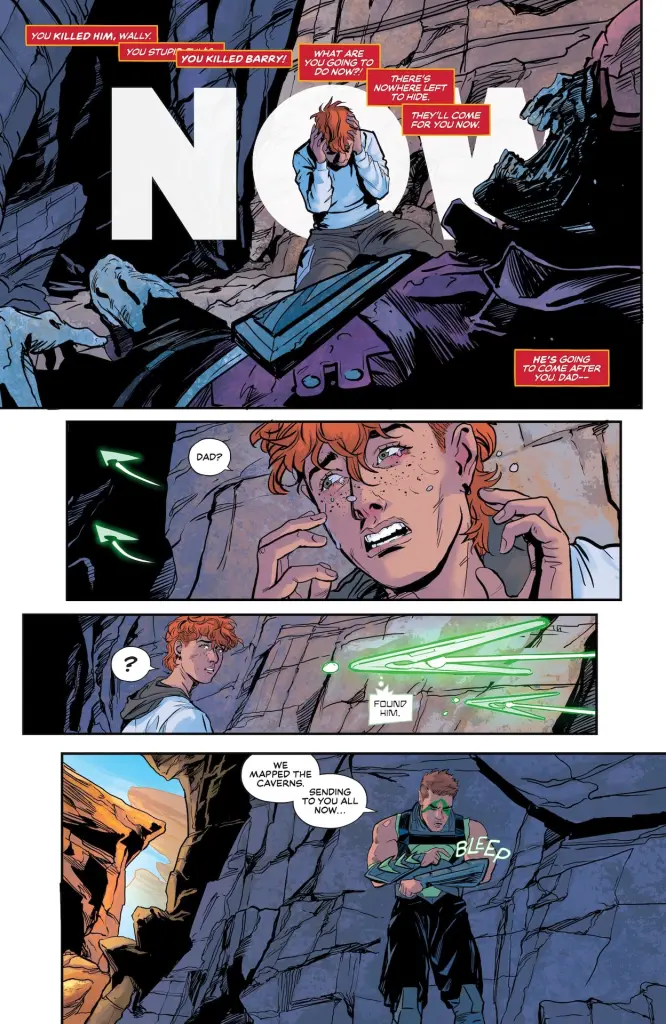
Nick Robles’ art elevates every moment. His panel layouts are chaotic but never confusing, mirroring Wally’s fractured perception of time. One standout sequence depicts Wally’s panic attack using overlapping panels, lightning bolt fractures, and blurred motion lines—showing how speed, in this context, becomes not a gift but a curse. Robles’ work, paired with vibrant, almost hallucinogenic coloring, captures both awe and dread in every moment.
Wally’s time-slipping escalates as he outruns the Rogues into the desert—only to experience his life in non-linear flashes. He sees his mother alive, glimpses Barry’s lab before its destruction, and most chillingly, stares down two diverging futures. One path shows him as the hero we remember, wearing Barry’s experimental suit. The other reveals a monstrous, lightning-wreathed shadow of himself—a new take on the Dark Flash. The ambiguity is potent: is Wally destined to become a savior or a storm?
Lemire teases bigger pieces of the puzzle. Barry Allen’s death still has loose threads. Mick Rory may be the fire-drenched monster teased earlier—or perhaps that’s Firestorm, another classic DC wildcard. The altered Gorilla Grodd, now a small, exposed-brain monkey rather than a towering telepathic ape, is another mystery. Does Gorilla City still exist? Is Grodd diminished in body but still deadly in mind? The answers feel tantalizingly close yet frustratingly just out of reach.
What Absolute Flash #2 does best is balance character with cosmic stakes. Wally is a young man grieving, terrified, and confused—still learning how to use his powers while being hunted by people who see him as a threat or an experiment. There are no comforting moments. Even his fleeting reunion with Barry is tinged with panic. Lemire doesn’t let Wally off the hook or give him peace. This Flash is not yet a hero—he’s a kid barely holding himself together while slipping through the cracks of time.
And that’s what makes this version of The Flash so compelling. He’s not just fast—he’s unstable, both physically and emotionally. The very thing that defines him is also threatening to destroy him.
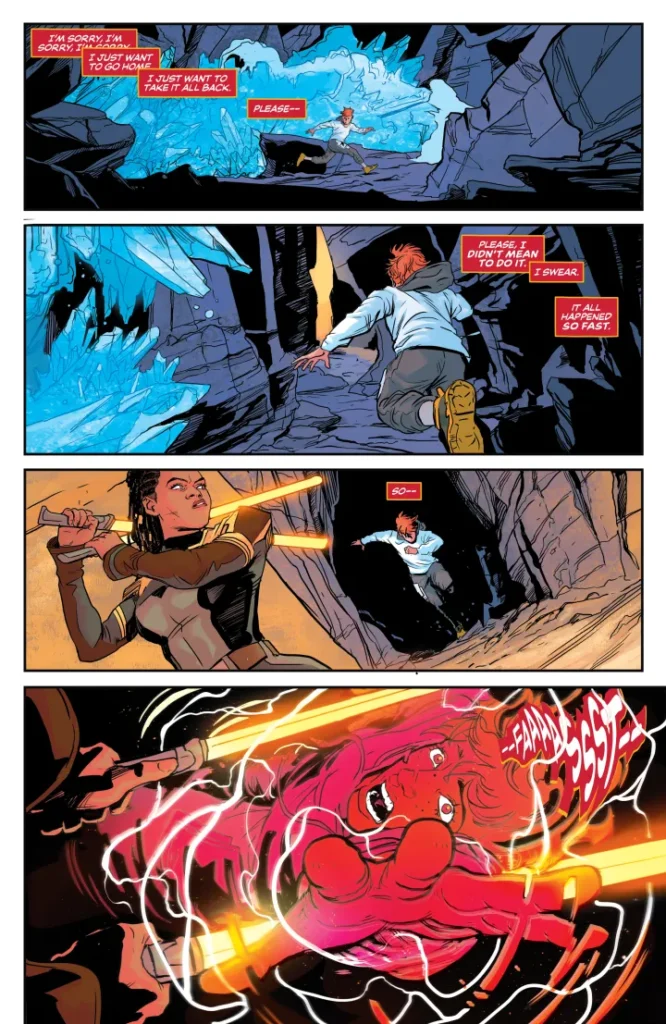
As Lemire continues shaping this new Absolute Universe—with fresh takes on DC heavy-hitters and a looming crossover—Absolute Flash stands out as one of the most daring and emotionally resonant reboots the publisher has delivered in years. It’s bold, unpredictable, and beautifully illustrated by Robles, whose kinetic linework and expressive characters make every page sing (or scream).
Issue #2 cements that Wally West’s journey is going to be more than just another superhero coming-of-age story—it’s a tragic, thrilling, time-shattering odyssey that could redefine The Flash for a new generation.
And if Lemire and Robles keep this up? They may just leave a mark on the Speed Force that not even time can erase.


